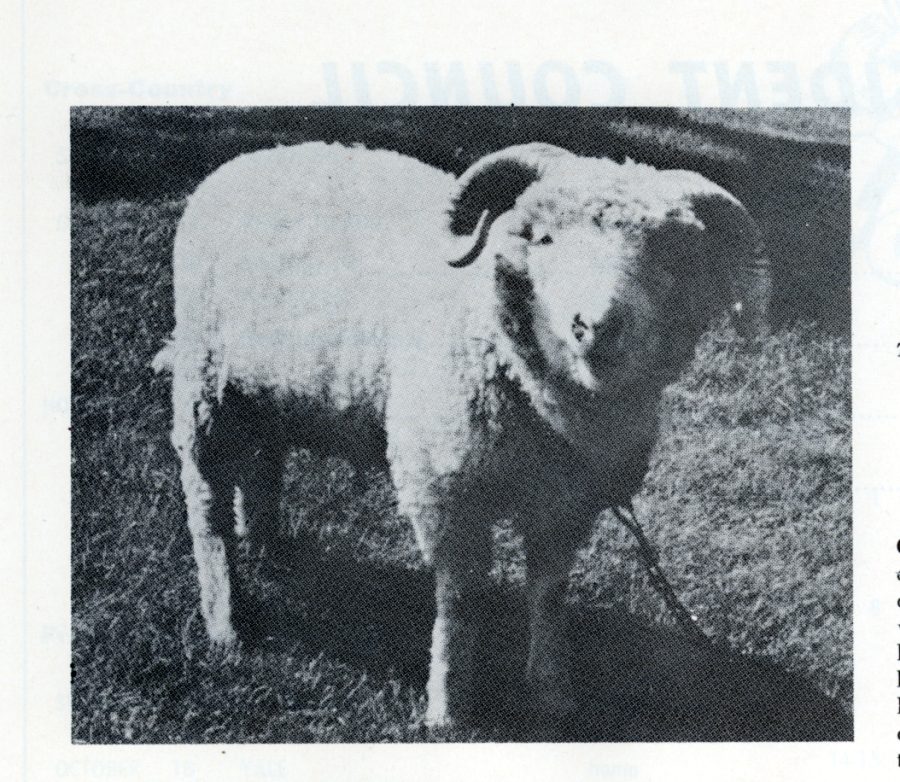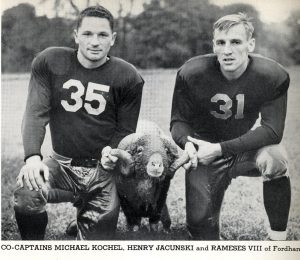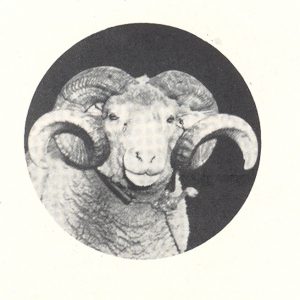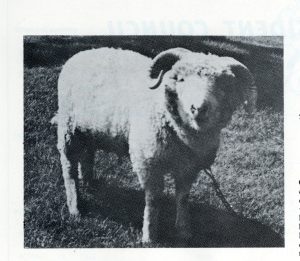Fordham, Don’t War With PETA
A live ram mascot would be irresponsible given Fordham students’ track record with the animals
COURTESY OF THE FORDHAM UNIVERSITY ARCHIVES
Fordham had a live ram from 1925 to 1978. It would be unethical to revive this archaic tradition.
April 12, 2023
If there was a room in which all members of the Fordham community were present — staff, students, administration, the Argo Tea ladies, etc. — I cannot imagine a single person would raise their hand when asked: “So! Who’s going to take care of the live ram?”
Maybe this is a bleak outlook, but I doubt anyone would stand up, impassioned by their secret love of recreational veterinarianism, and donate the level of care and devotion a live animal needs. If a live ram were introduced to Fordham’s campus, to graze in the cigarette butt-ridden lawn of Edward’s Parade, I believe it would ultimately end in disaster.
Fordham doesn’t exactly have a shining history when it comes to our live mascots. We kept actual rams as our mascots from 1925 until 1978, which resulted in a string of intrigue, murder and cruelty that I’m surprised People for the Ethical Treatment of Animals, or PETA, doesn’t include as a header on their website. The first few rams (all named Rameses, an indication of the failing dynasty to come) were kidnapped and met their ends in slaughterhouses. The exception was Rameses III, who was reportedly extremely aggressive, escaped several times and interrupted local train schedules until he had to be ceremonially executed by the Fordham Rifle Team.
As a university in the middle of New York City, we simply don’t have the facilities or the staff required for the upkeep of a live ram at either campus.
I won’t give a full bloody history of the rest, as I wouldn’t want to rob someone of a compelling and frankly horrifying book idea, but honorable mentions include Rameses XVIII, whose shed was burned down and who later died of alcohol-related liver disease; Rameses XXI, who was kidnapped so often he spent more time at rival schools’ campuses than at ours; and Rameses XIX, who was dyed green by Manhattan College students and died after a long battle with the flu, running up steep medical bills for Fordham to pay.
While this might make one wonder if animal cruelty was the only other pastime before the invention of cable television, I wouldn’t devote such an optimistic outlook to the present, either.
I enjoy most of the people at Fordham. But, I don’t find that mutually exclusive with the fact that in every group of co-eds I’ve ever been in, there’s someone who gets intoxicated and does something unspeakable for Snapchat, and then everyone has to live with it. (One time I saw a drunk young man kick a pigeon, and I still think about it every day.)
It would only be a matter of time before a student hurt the ram— by dyeing it, taking it to their dorm, trying to feed it a Rice Krispies Treats and killing it instantly. How would a lone ram defend itself against college students returning from a night out?
There are facilities and student programs that deserve the attention and money that would go toward this lone ram.
Any live animal deserves a proper habitat and adequate care to ensure its well-being. As a university in the middle of New York City, we simply don’t have the facilities or the staff required for the upkeep of a live ram at either campus.
Even if livable conditions were established, we would have to consider the cost of crafting a biome for a single ram in Manhattan or the Bronx. I assume ram food costs money, and I can’t imagine any field crops would thrive on Fordham’s campus, especially at Lincoln Center.
Fordham’s monetary distribution is questionable at best, and the university community is already frustrated by the 6% increase in tuition for next year. I don’t think that — considering the list of things that need financial attention — getting a live animal to just hang out should be a top priority. There’s brown mold in my dorm right now as I write this. (Seriously, anyone reading this, please help with the mold in my dorm.)
There are facilities and student programs that deserve the attention and money that would go toward this lone ram. Would it be cool to walk around campus and turn to see a farm animal? Maybe, yeah. Every time I’m on a road trip and I see cows, I yell “Cows!” But they’re on a farm, where they’re supposed to be. As much as I might love to yell “Ram!” multiple times per day, it would be unfair to the animal. Sometimes I even feel bad for the squirrels who live at Rose Hill. I know there’s a better life waiting for them somewhere. I couldn’t imagine the dismay I would feel seeing a real ram. They have big eyes and look sad at the best of times.
Any gratification I might get from seeing a ram would be for me, not the ram. He wouldn’t be happy to see me. He wouldn’t even know me. I wouldn’t want to condemn him to an existence on a college campus. Even if he only shows up at the football field and the basketball courts, his presence would solely be for the benefit of the students. The ram doing a lap at halftime might be a nice Instagram story, but it would undoubtedly be a harrowing experience for it. Besides, the Rameses mascot, that genius in a suit, would be out of a job. They walk on two legs and can make people do the wave. No animal can do that.
I’m not a perfect person. I’m only vegetarian 75% of the time. But I could not, in good conscience, support trapping a ram in a life of watching overcaffeinated college students vape in the quad — not after all we’ve done.















James Gilbert • May 30, 2023 at 2:03 pm
I appreciate a live animal mascot, but any efforts to bring a live ram to Fordham should be abandoned. Beside the litany of offenses perpetrated against previous mascots, the care and welfare of a large farm animal is no small matter. I would suggest your readers investigate what other universities do to take of their live mascots, particularly the University of North Carolina which has had a live ram mascot since the mid-’20s.
Another factor to consider is the Dorset Horn sheep (the UNC breed and perhaps the breed Fordham used) is an endangered species according to Wikipedia and the family that cares for the UNC mascot breeds them.
One thought I’ve had is schools donate money or conduct research that would benefit the animals and/or their habitats. I think this would be a great way to honor these animals.